Ray Arrell, Tamsyn Lonsdale-Smith and Joel Venn discuss a regional view of the net zero transition and the scale of the analysis that sits behind our work to deliver SSEN’s most recent Distribution Future Energy Scenarios assessment.
On Monday 7 March, Regen and SSEN launched the 2021 edition of the Distribution Future Energy Scenarios (DFES) analysis (see our joint press release here). This analysis provides a detailed view of four possible future scenarios for electricity generation, storage and demand on the distribution networks in the North of Scotland and Southern Central England licence areas, out to 2050.
Net zero 2050 – a significant evolution of our distribution networks
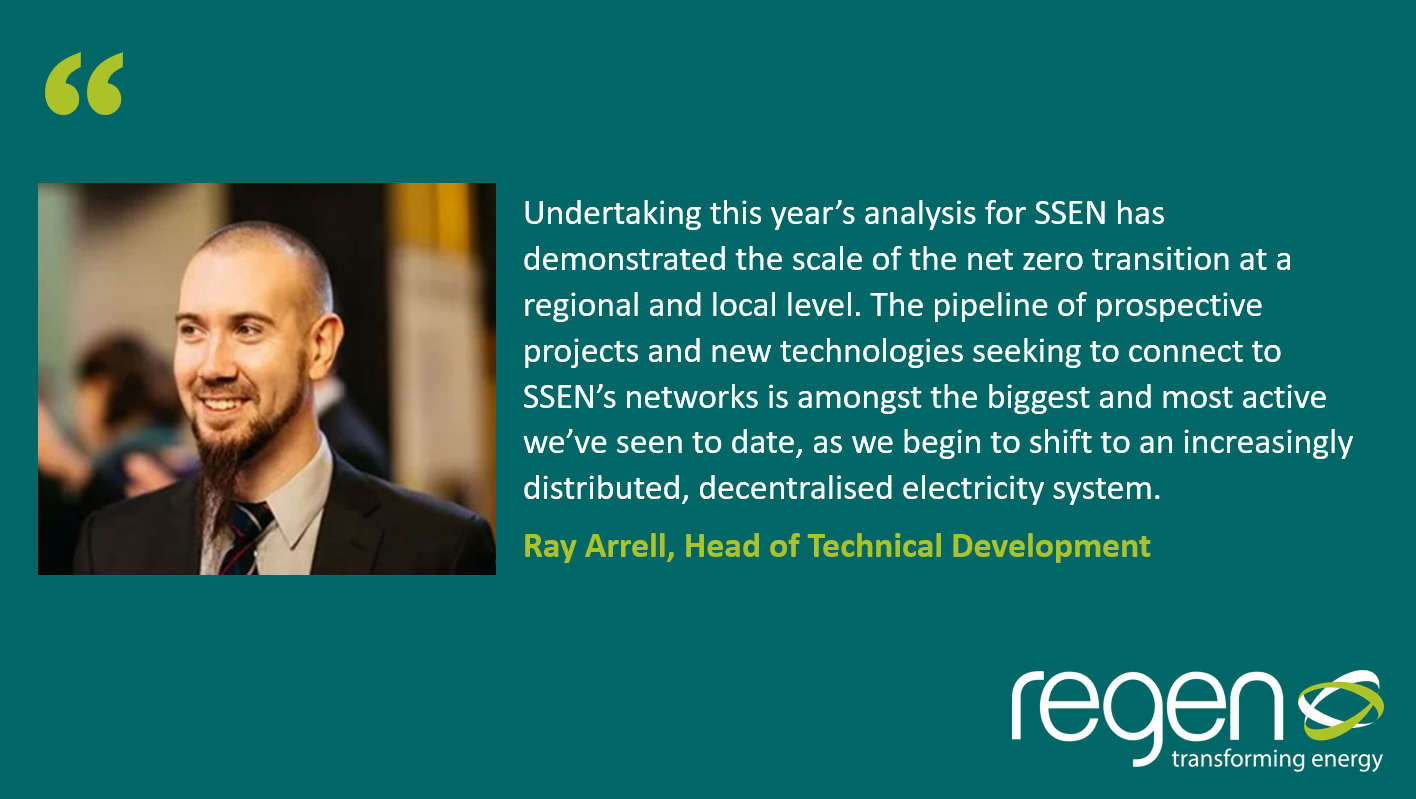
Looking out to 2050, our scenario analysis shows:
Transformative changes in the scale and mixture of distributed energy generation. Under one scenario, total distributed renewable generation capacity (solar, wind, hydro and marine) could increase to c.22 GW by 2050 across both of SSEN’s licence areas. This is likely to include significant deployment of onshore wind in the north of Scotland and large-scale solar PV in southern England. In addition to this, a rapid decommissioning of diesel and fossil-gas generation could be replaced by c.1 GW of hydrogen-fuelled generation across SSEN’s licence areas, in areas where hydrogen supply clusters may be developed, such as Swindon, Oxford, Dundee and Aberdeen.
An accelerated rollout of low carbon technologies, which could see up to six million EVs and over three million heat pumps online by 2050 in SSEN’s licence areas. Many of these low carbon technologies could be deployed in the next decade, to align with both UK and Scottish Government targets.
A significant deployment of electricity storage capacity could be seen across both licence areas, with a pipeline of hundreds of speculative battery projects enquiring to SSEN in 2020 and 2021. By 2050, SSEN’s networks could potentially host over 3 GW of battery storage capacity, as well as alternative storage technologies such as liquid air energy storage and small-scale pumped hydro.
New and future disruptive sources of electricity demand could also connect to SSEN’s network. This could include up to 5 GW of demand to power hydrogen electrolysers across both licence areas and over 1 GW of new demand from large-scale data centres in southern England.
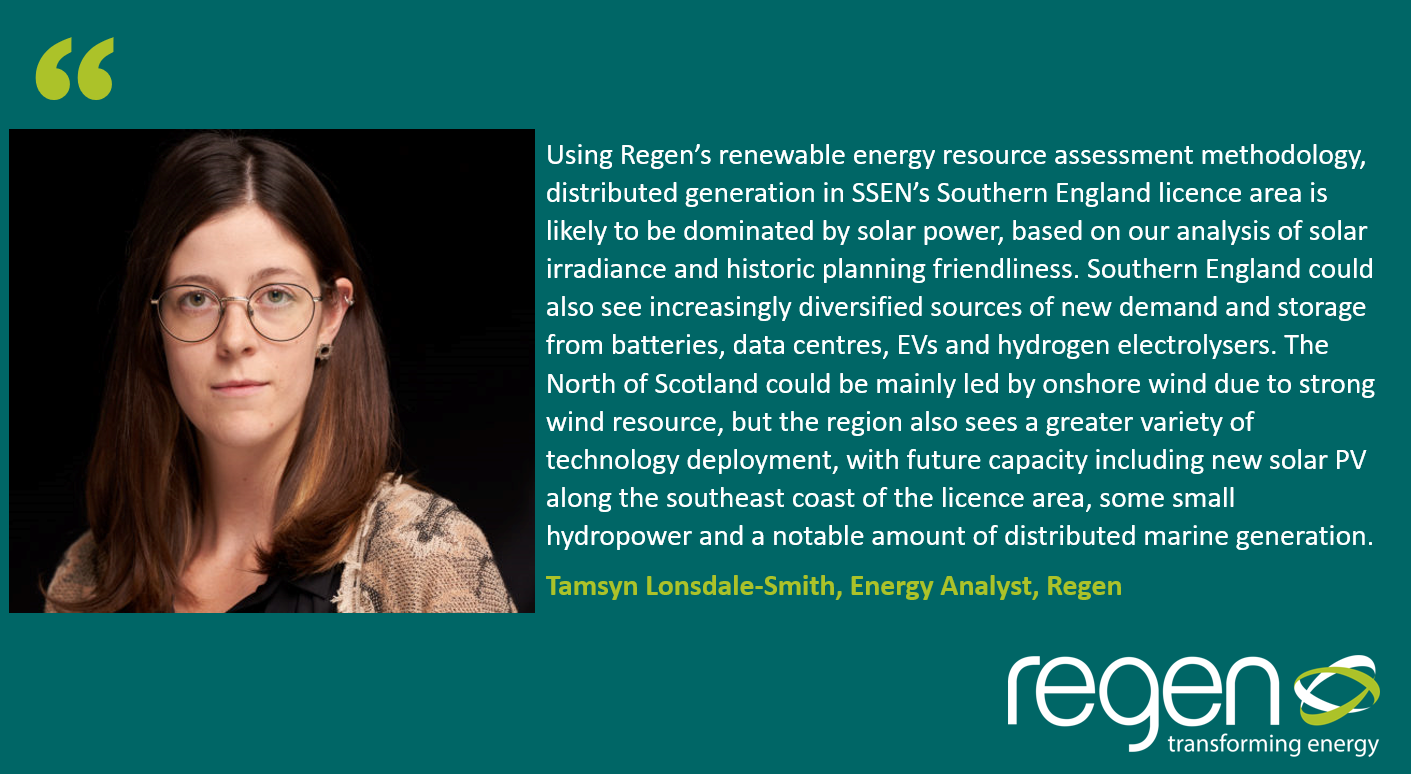
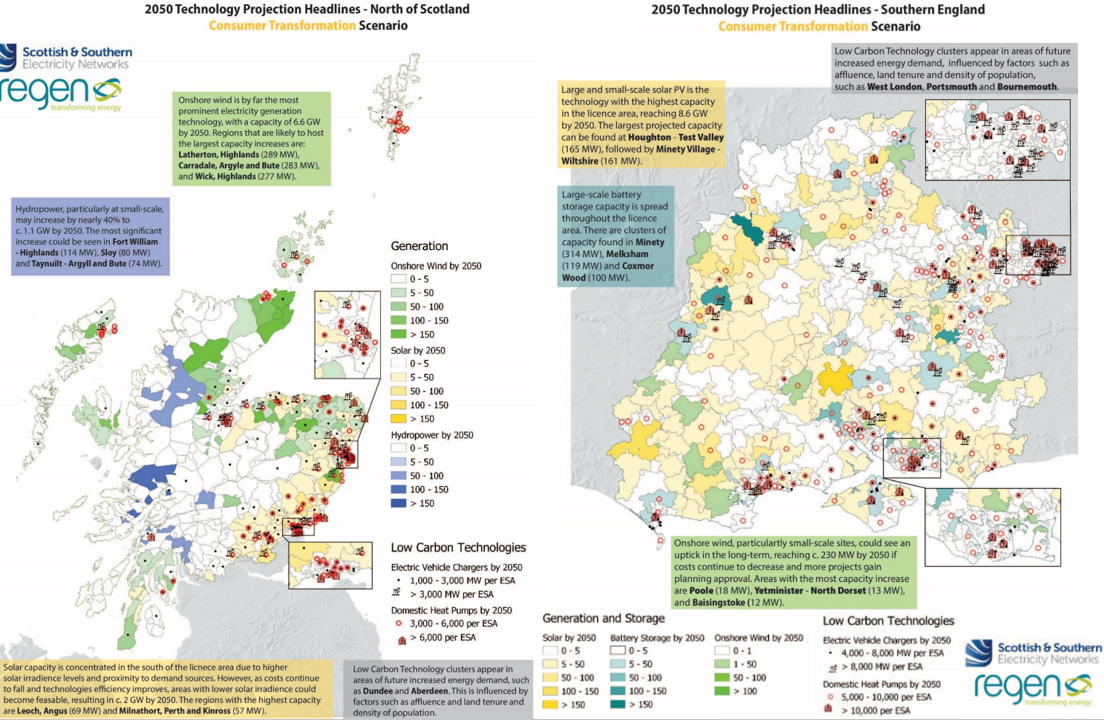
A significant modelling exercise – in numbers
The scale of the future energy transition and size of the challenge facing our electricity networks is echoed in the depth of analysis that is undertaken to produce our DFES analysis. This year’s DFES assessment has been one of Regen’s most significant projects to date, assessing 20 technology sectors, requiring detailed scenario modelling for over 50 individual technologies and sub-technologies.
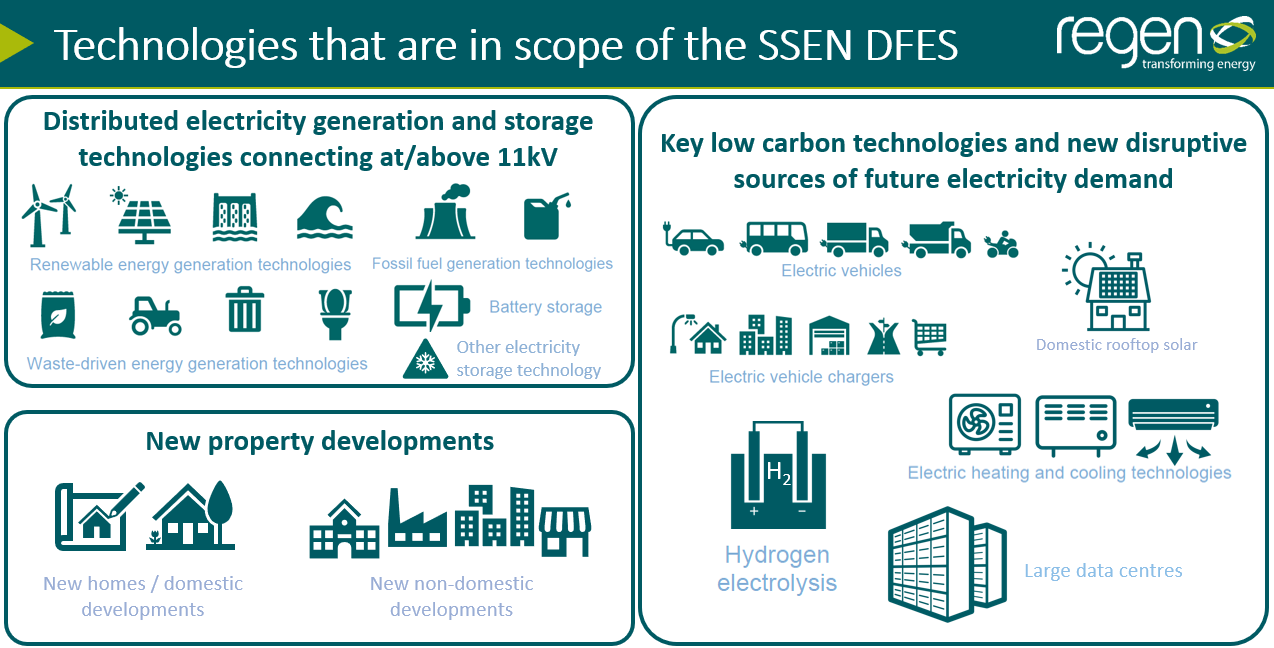
Our analysis uses the four National Grid ESO Future Energy Scenarios[1] as the framework for the analysis. Under these four scenarios, the team produced 30 sets (2020-2050) of annual projections for each licence area. To provide SSEN’s network planning teams with a more granular view of the outputs at individual substation/supply areas across their network, the scenario projections for each technology were geographically disaggregated across each licence area. Depending on the technology, this spatial modelling enables our projections to be distributed according to a variety of factors, such as project development hubs, suitable resource areas or urban population centres, to name a few, by using pre-defined Electricity Supply Areas or ‘ESAs’. An ESA is a geographical zone representing a block of demand or generation, that connects to a common point on SSEN’s distribution network.
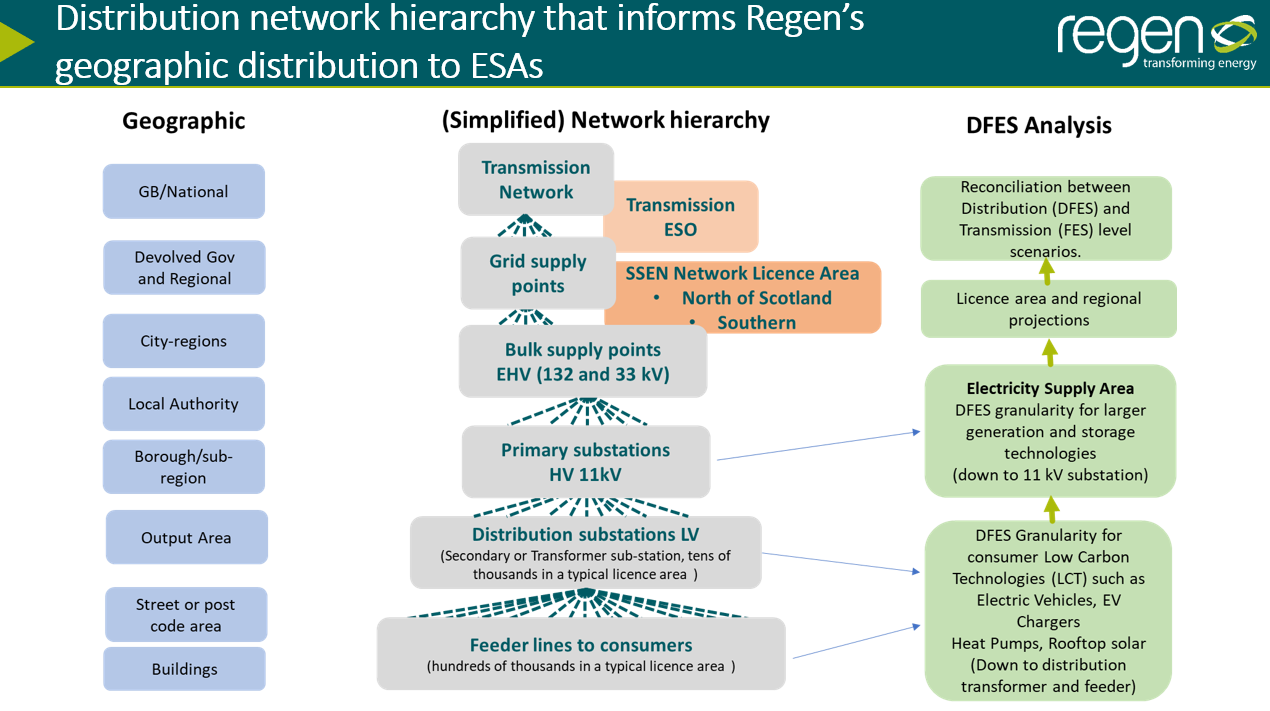
For larger-scale generation, storage and demand technologies the scenario projections are disaggregated across c.1,400 11 kV level ESAs. For certain smaller/consumer level low carbon technologies such as domestic heat pumps, EVs, rooftop PV and home batteries, the geographic distribution goes deeper, disaggregating scenario projections across c.460,000 low voltage supply areas – practically street-level. The resultant outputs of this geographical modelling has created some of the largest data files Regen has ever produced, totalling over 100 GB.
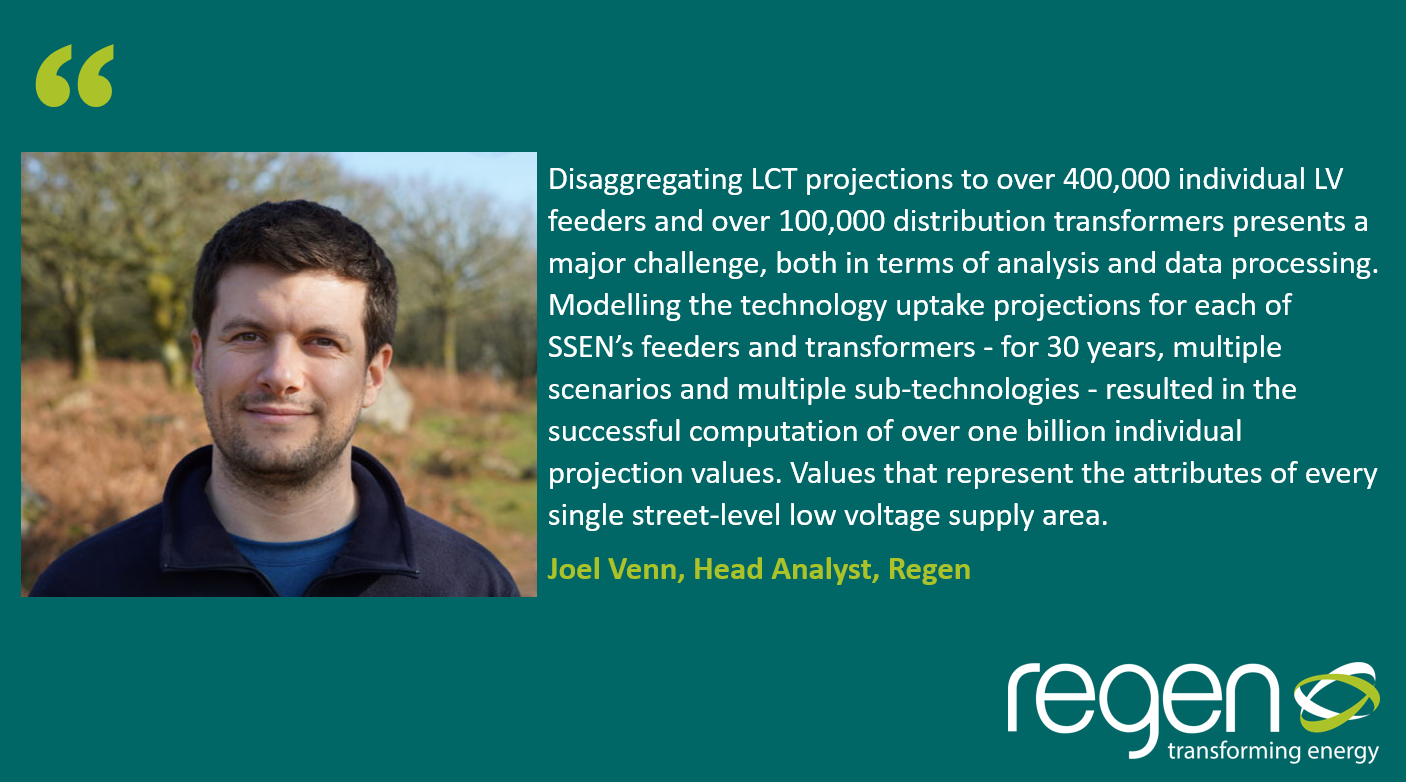
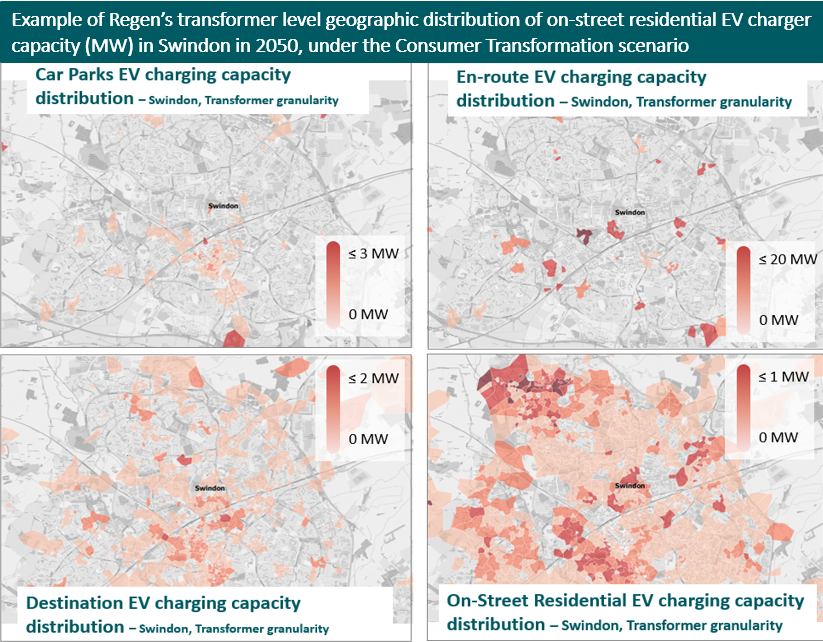
Even the summarising licence area reports (available to download here) are not immune to the scale of the analysis, clocking in at over 300 pages between them, summarising the assumptions, stakeholder input, data sources and modelling techniques applied to each of the 50+ sub-technologies that are in the scope of the study.
Conclusion – what does DFES analysis tell us about net zero?
So other than some significant statistics, what does this mean for our networks planning for net zero? Firstly, it reminds us that the energy transition is a large, complex, multi-faceted challenge facing both our electricity networks and the wider energy sector as a whole. As the RIIO-ED2 business planning process enters its final stages, it is clear that our electricity system will need to undergo a significant evolution. With the adoption of legally binding net zero targets, the unprecedented operational and personal upheaval of the Covid-19 pandemic and the recent volatility of our fuel and retail energy prices, the need for well-evidenced forecasting and investment planning for our electricity networks has probably never been more crucial.
The scale of the outputs seen in these DFES studies also demonstrate that the transition is not a single, predetermined, unified path. There are in-fact a variety of possible outcomes, reflecting how national and regional policy could combine with local factors, geographic resources, developer appetites and consumer behaviours, across numerous different technologies. This highlights the depth of analysis that is required for electricity networks to fully understand how much capacity could connect to their network, by when, and where they may need to prioritise their investment. The methodology and supporting evidence Regen uses to develop its scenarios has evolved, adapted and improved each and every year since we started doing this in 2015 with Western Power Distribution. This in itself is a reflection of the rapid changes in the energy sector that we are now seeing, with new technologies and policy implications playing out as on-the-ground deployment and impacts to future planning.
We are really pleased to have worked with SSEN and a number of regional stakeholders to develop a set of credible scenarios for SSEN’s networks, to ensure SSEN have as detailed a picture as they can to prepare their network for a net zero future.
To find out more about our scenario analysis work, please contact Ray Arrell on rarrell@regen.co.uk.
[1] See National Grid ESO: https://www.nationalgrideso.com/future-energy/future-energy-scenarios
